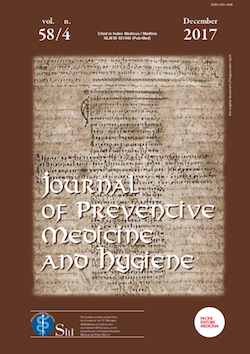Abstract
Waste generation is inevitable because humans continue to generate waste due to increase in population, urbanization and advancement in technology. This generation of waste leads to contamination and degradation of soil through the disposal of waste materials on dumpsites. This study assessed the helminths and heavy metal content of Awotan dumpsite in Ibadan city. Surface soils (0-15cm depth) of the dumpsite were randomly sampled at different dumpsite areas with the aid of a quadrat. Helminth content was determined using the zinc floatation method and the heavy metal concentrations of the soil were determined using Atomic Absorption Spectrophotometry (AAS). Some physicochemical properties of the soil were also determined. Data obtained were analysed using Statistical Package for Social Sciences (SPSS), version 20. Results showed that the dumpsite soil was slightly alkaline with an average pH of 8.1± 0.2 while the electrical conductivity, temperature, moisture content and height above sea level were 545.9±235.3μS/cm, 32.6±2.2oC, 17.2± 4.8 % and 236±4.6 m respectively. The overall prevalence of soil helminths was 10.4% with Ascaris lumbricoides being more prevalent (8.8%) than others. The heavy metal concentration of the soil followed the trend Pb (709.7± 1574.9mg/g) > Cu (316±227.1mg/g) > Cr (48.8±17.7mg/g) > Cd (9.7±10.9mg/g). There was a low overall prevalence of soil helminths. However, the heavy metal concentrations exceeded USEPA permissible limits providing a possible source for underground water contamination in residential areas around the dumpsite. Residences close to the dumpsite should be discouraged by the government.
Key words: Helminths, heavy metals, soil, dumpsite, Ibadan city.
Waste generation is inevitable because humans continue to generate waste due to increase in population, urbanization and advancement in technology. This generation of waste leads to contamination and degradation of soil through the disposal of waste materials on dumpsites. This study assessed the helminths and heavy metal content of Awotan dumpsite in Ibadan city. Surface soils (0-15cm depth) of the dumpsite were randomly sampled at different dumpsite areas with the aid of a quadrat. Helminth content was determined using the zinc floatation method and the heavy metal concentrations of the soil were determined using Atomic Absorption Spectrophotometry (AAS). Some physicochemical properties of the soil were also determined. Data obtained were analysed using Statistical Package for Social Sciences (SPSS), version 20. Results showed that the dumpsite soil was slightly alkaline with an average pH of 8.1± 0.2 while the electrical conductivity, temperature, moisture content and height above sea level were 545.9±235.3μS/cm, 32.6±2.2oC, 17.2± 4.8 % and 236±4.6 m respectively. The overall prevalence of soil helminths was 10.4% with Ascaris lumbricoides being more prevalent (8.8%) than others. The heavy metal concentration of the soil followed the trend Pb (709.7± 1574.9mg/g) > Cu (316±227.1mg/g) > Cr (48.8±17.7mg/g) > Cd (9.7±10.9mg/g). There was a low overall prevalence of soil helminths. However, the heavy metal concentrations exceeded USEPA permissible limits providing a possible source for underground water contamination in residential areas around the dumpsite. Residences close to the dumpsite should be discouraged by the government.
Key words: Helminths, heavy metals, soil, dumpsite, Ibadan city.

